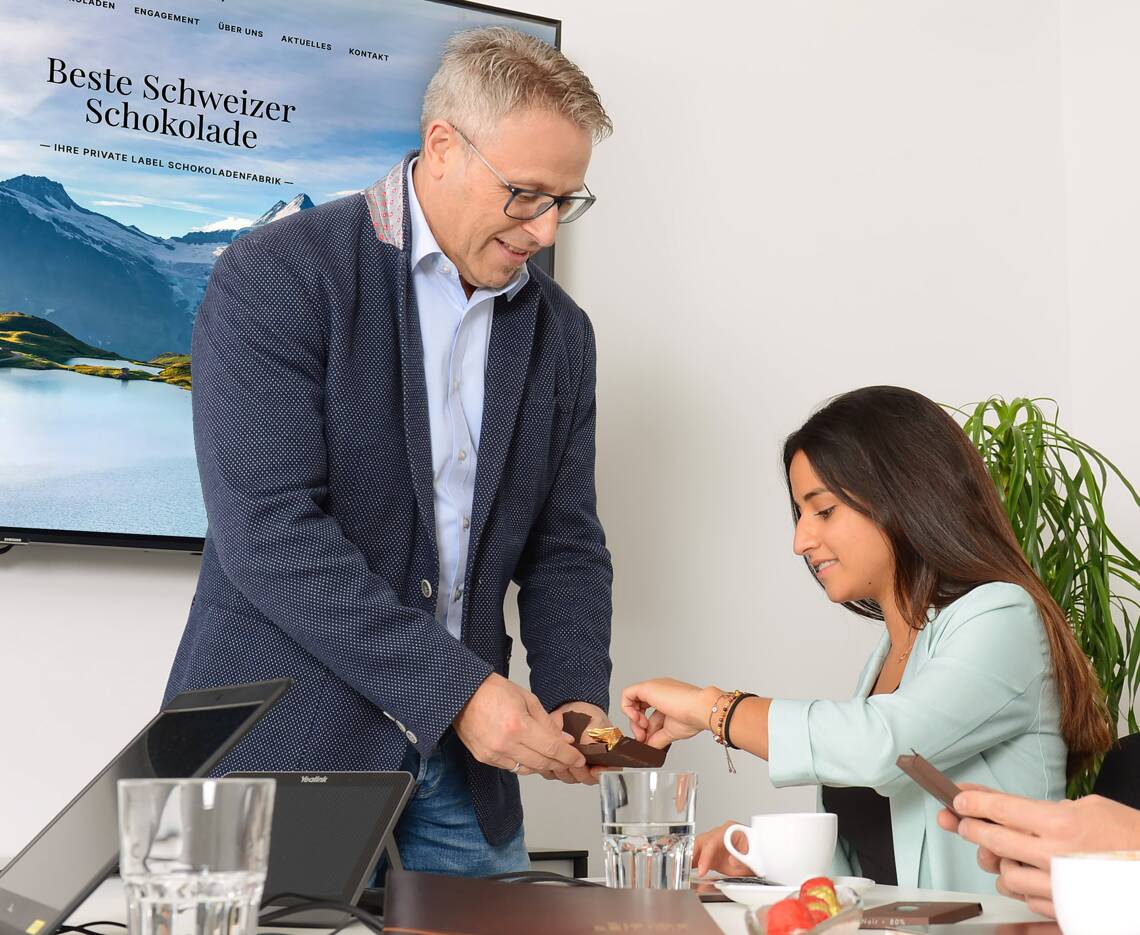Cocoa, Trees and Climate Action – Strategies to Adapt to Climate Change
Introducing the project
This project supports cocoa farmers in Peru to enhance climate adaption and resilience through the climate-smart cultivation method of agroforestry. The farmers are at the centre of the project: it offers them education, cocoa seedlings, financial incentives, and promotes good agricultural practices.
What is the main objective of the project?
The project aims to enhance the climate resilience of the farmer cooperative Norandino. It centres on promoting diverse agroforestry systems that support ecologically, economically, and socially sustainable cocoa farming. Objectives include carbon sequestration, biodiversity enhancement, increased farm income, and improved cocoa quality.
Through this project, the goal is to design agroforestry systems that prioritise farmers' needs and visions while adapting to local conditions to optimise resource utilisation and resilience. In addition to implementing ecological cocoa farming practices, the project serves as a learning and experimentation platform, allowing farmers and field technicians to explore and test various approaches to agroforestry and agroecological concepts. Ultimately, at the project's conclusion, farmers will decide independently whether and how to continue with agroforestry practices.
| Location Peru |
Duration 2024- 2026 |
Number of beneficiaries 400 households |
| Implementation Partnership Norandino and Stella Bernrain |
Project Partners Choba Choba |
Budget Total: CHF 260 000 Contribution SECO: CHF 100 000 |
How will the project contribute to sustainable cocoa production?
Together with Norandino's farmers the project promotes and implements cocoa agroforestry systems which enhance biodiversity, capture carbon and increase the resilience and diversity of the production systems. Furthermore, the project aims to improve cocoa quality using fermented organic fertilisers and improved post-harvest processing, enabling farmers to attain a better price in the cocoa market.
The project contributes to SWISSCO’s Roadmap 2030 of a deforestation-free and climate-friendly cocoa-supply chain. Moreover, through diversification and quality improvement, as well as fostering farm resilience, the project’s activities will also support farmers in achieving a living income for their households.
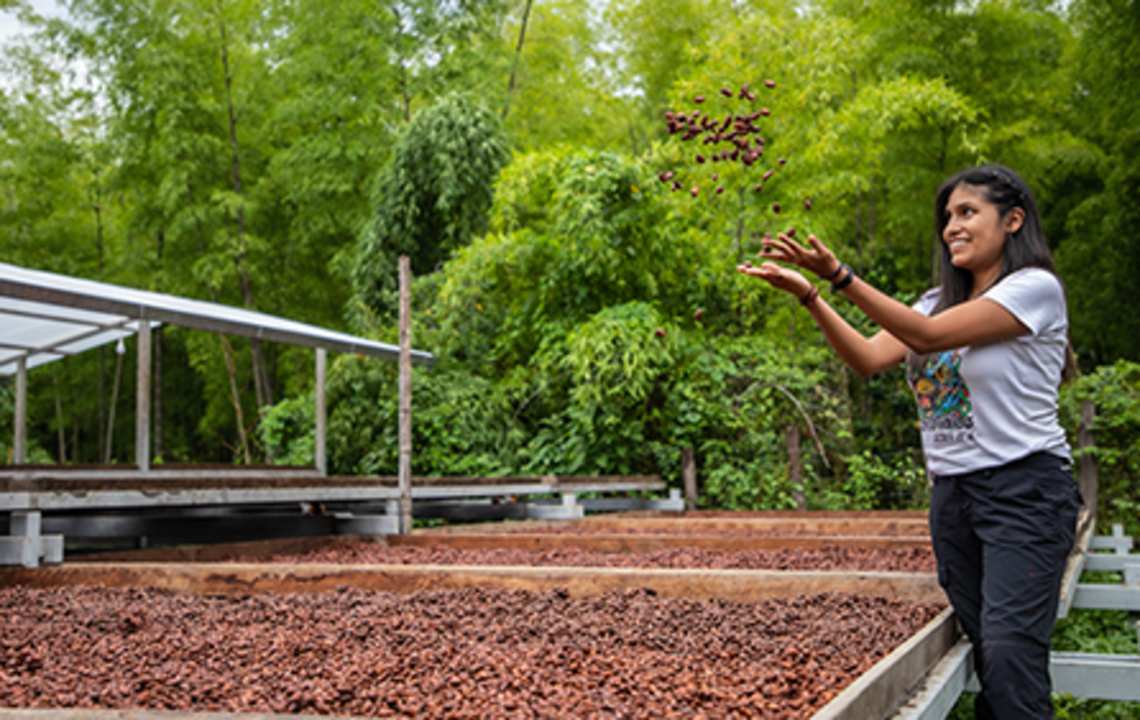
"As part of this project, we want to work with cocoa farmers and demonstrate that cocoa agroforestry is more than an agricultural practice – it is a commitment to the land, a partnership with nature and a mechanism to adapt to climate change for a sustainable future of our region."
Claudia Vasquez Miñope, Reforestation Coordinator at Norandino
What steps are taken during the project?
Through workshops and training sessions, farmers will learn about establishing and maintaining agroforestry systems, producing and utilising organic fermented fertilisers, and implementing appropriate post-harvest processes. Technical project staff will provide support and guidance to farmers throughout the project, assisting them with designing, planting, and maintaining agroforestry systems. Additionally, technical staff will be tasked with establishing nurseries, organic fertiliser production systems and post-harvest facilities.
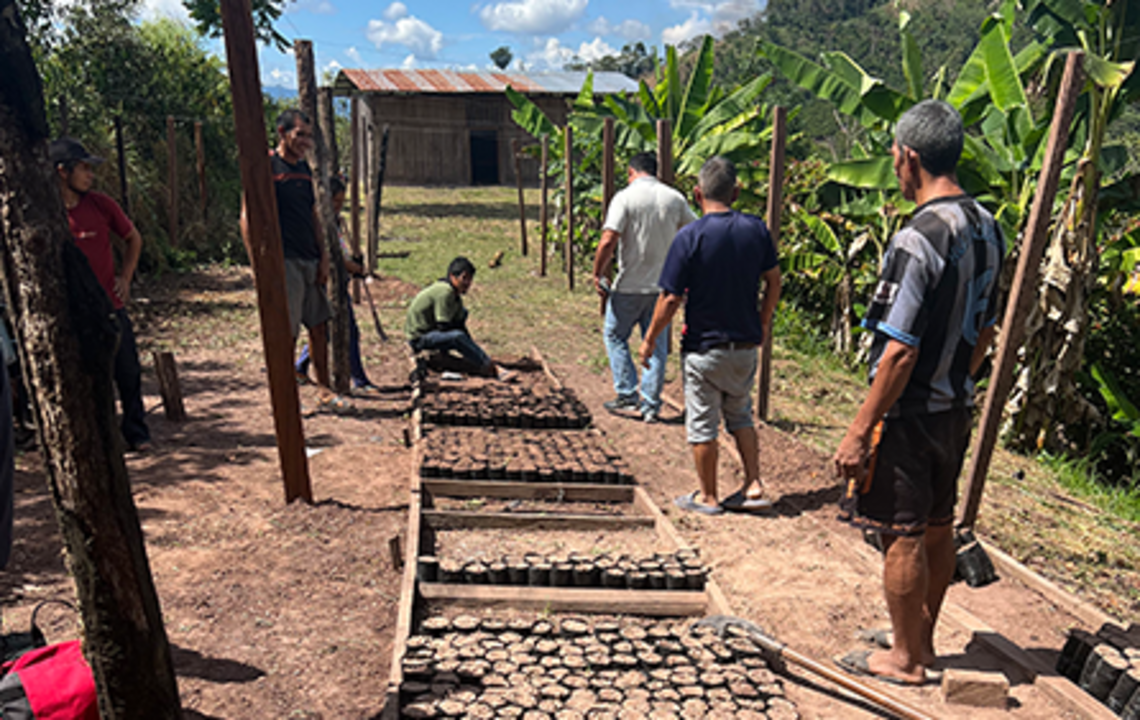
One of the first steps: setting up a shade and cocoa tree nursary.
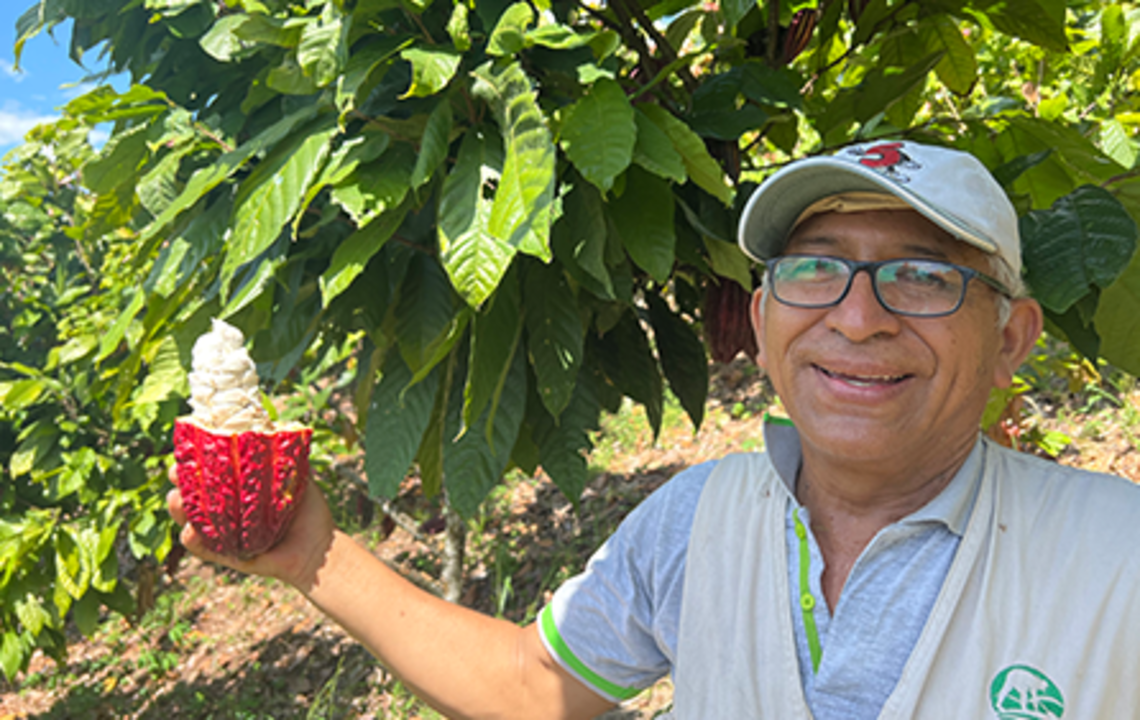
James Rengifo Piñero – field coordinator of the project
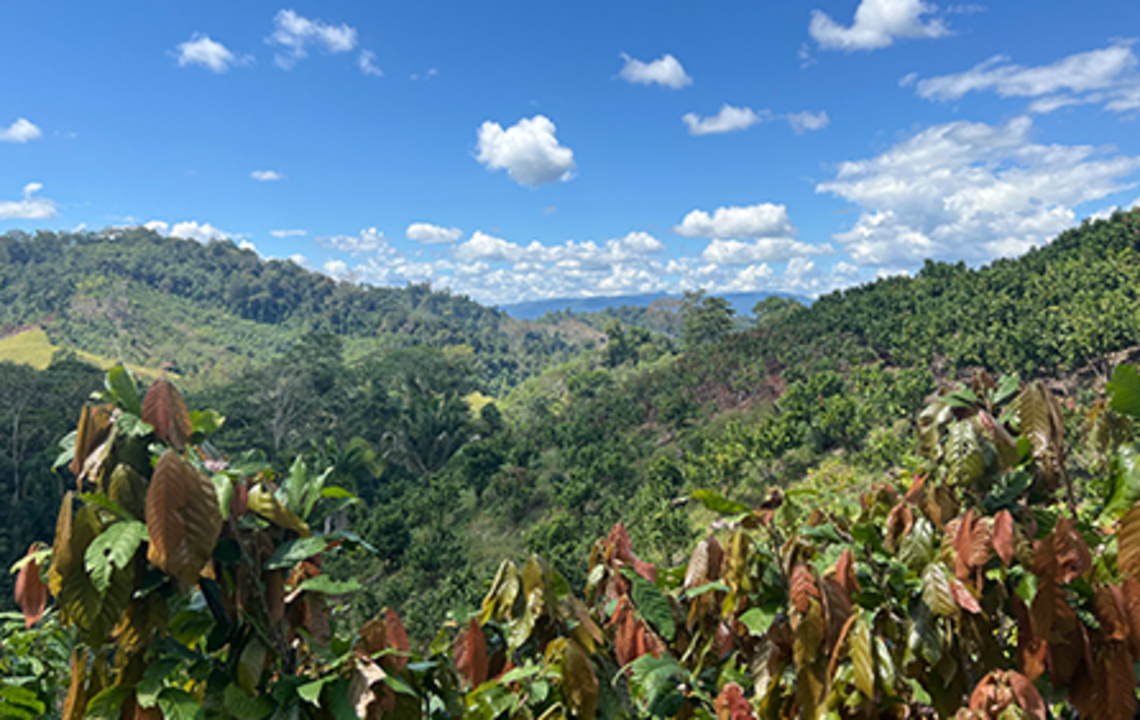
On a cocoa plot in San Juan the Shitari, one of the communities participating in the project.
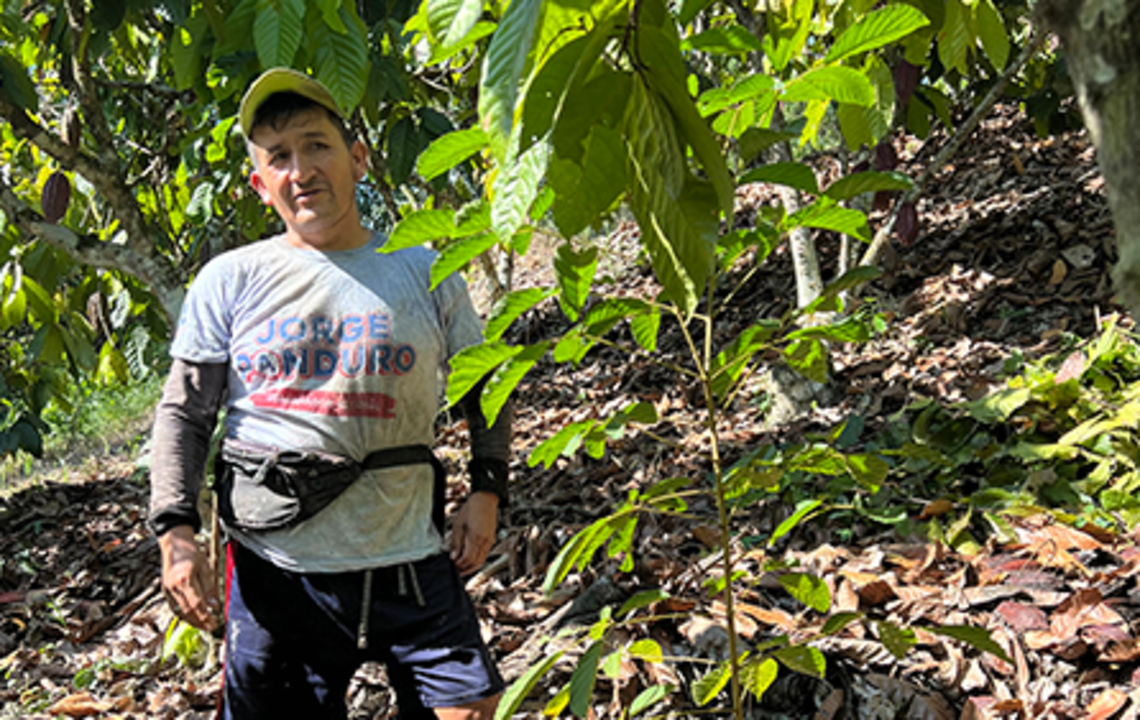
Farmer Segundo Provilan Morales Pintado who lives and works in Huicungo and is of the project
What is innovative about this project?
This project stands out for its innovative approach in multiple facets. Firstly, it employs advanced monitoring techniques through restor.eco, enabling precise and long-term assessment of sustainability via satellite imagery. Additionally, it pioneers a shift from mere carbon offsetting to proactive investments in sustainable supply chains. Leveraging Norandino's germ bank for cocoa varieties ensures resilience and productivity, while a farmer-centric approach ensures alignment with local needs and aspirations, setting a new standard in agroforestry initiatives.
How does the project contribute to improving the (economic) situation of girls and women?
The project significantly enhances the economic situation of girls and women through comprehensive gender equity initiatives. Workshops on gender equality are conducted across project communities, fostering awareness, and promoting practices to reduce societal gaps. Special focus is placed on empowering women and youth through leadership training and the establishment of women's committees. Additionally, the project emphasises building alliances between women and men, ensuring equitable opportunities and decision-making, thereby fostering sustainable development and growth.

Author:
Manuel Holzer
Head of Sustainability

